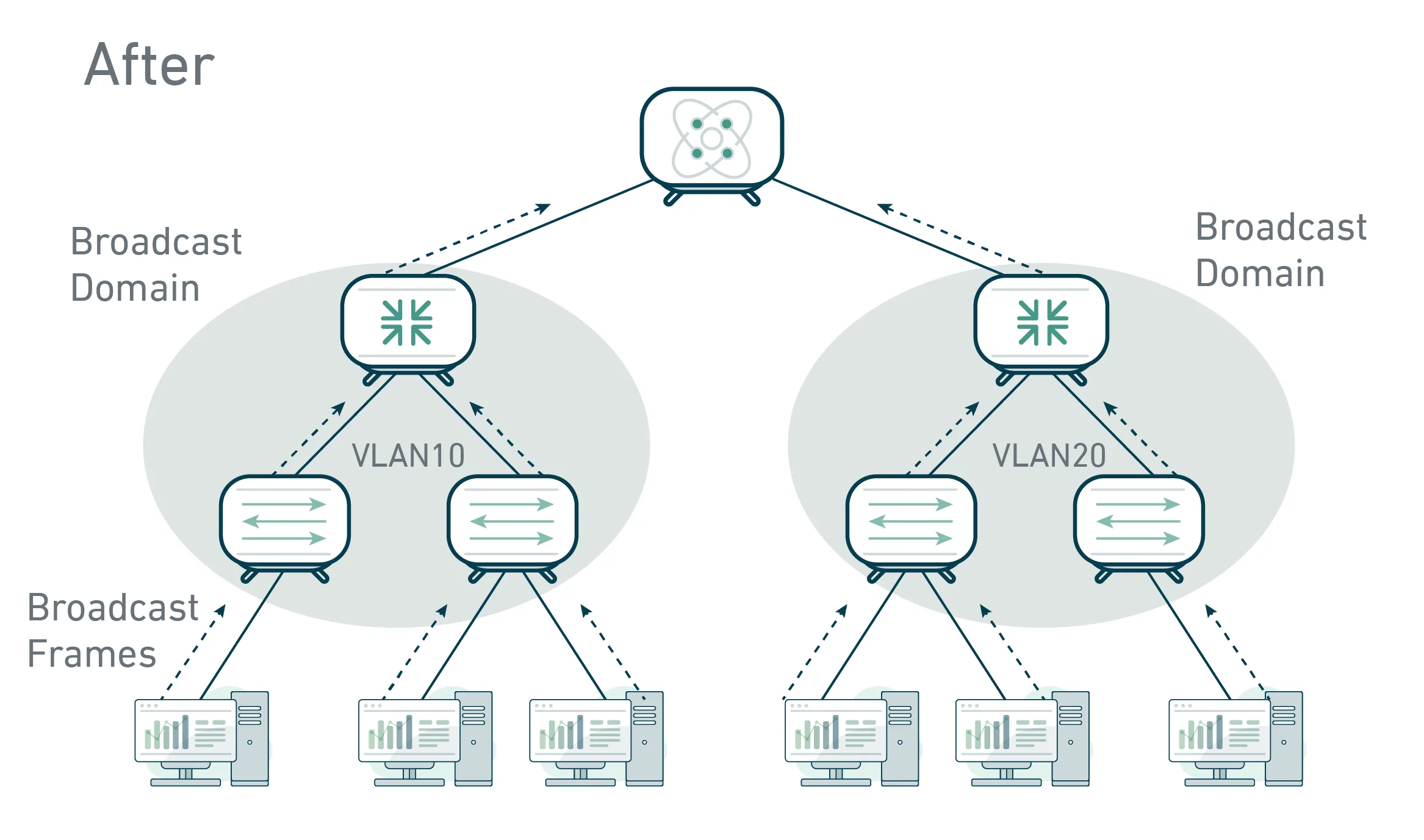What is a Virtual LAN (VLAN)?
WA VLAN is a logical grouping of network devices with different physical LANs.
What Are VLANs Helpful With?
By further dividing the network part of the IP address into several subnets, the problems of the low utilization rate of IP address space and inflexible two-level IP addresses can be solved.
Similar to VLAN, the subnet can isolate communication between hosts. Hosts belonging to different VLANs cannot communicate directly with each other, nor can hosts belonging to different subnets communicate directly with each other. But there is no necessary correspondence between them.


Therefore, VLAN has the following advantages:
1. Restrict broadcast domain: the broadcast domain is limited to one VLAN, which saves bandwidth and improves network processing capacity.
2. Enhance the security of LAN: Framesin different VLANs are isolated from each other during transmission, that is, users in one VLAN cannot communicate directly with users in other VLANs.
3. Improve the robustness of the network: the fault is limited to one VLAN, and the fault in this VLAN will not affect the normal work of other VLANs.
4. Flexible construction of virtual workgroups: VLAN can be used to divide different users into different workgroups, and users in the same workgroup don’t have to be limited to a fixed physical scope, so network construction and maintenance are more convenient and flexible.
VLAN vs Subnet
By further dividing the network part of IP address into several subnets, the problems of low utilization rate of IP address space and inflexible two-level IP address can be solved.
Similar to VLAN, subnet can isolate communication between hosts. Hosts belonging to different VLAN cannot communicate directly with each other, nor can hosts belonging to different subnets communicate directly with each other. But there is no necessary correspondence between them.